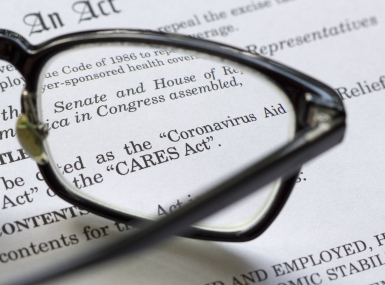Webinar Series: Jail Reentry for People with Substance Use Disorders Resources

Upcoming Events
Related News
Counties are implementing thoughtful and robust strategies to address the distinctive needs of individuals with substance use disorders (SUD) who are returning to the community from jail. Nearly two-thirds of people sentenced to jail meet the criteria for drug use or dependence, and reentry from jail can be a pivotal point in the justice process. This is especially true in times of instability like the current COVID-19 pandemic. Counties are supporting people’s reentry through housing, employment and transportation as well as accessing treatment. NACo hosted a webinar series in March 2022 in conjunction with the Institute for Intergovernmental Research (IIR) to highlight strategies counties are using to support people with substance use disorders that are leaving jail. Presenters discuss strategies counties can use to partner with government agencies and service providers to share information about and develop jail reentry strategies that encompass training and workforce development, obtaining housing, accessing transportation and making connections to behavioral health treatment.
About the Series
Counties are implementing thoughtful and robust strategies to address the distinctive needs of individuals with substance use disorders (SUD) who are returning to the community from jail. Nearly two-thirds of people sentenced to jail meet the criteria for drug use or dependence, and reentry from jail can be a pivotal point in the justice process. This is especially true in times of instability like the current COVID-19 pandemic. Counties are supporting people’s reentry through housing, employment and transportation as well as accessing treatment.
NACo hosted a webinar series in March 2022 in conjunction with the Institute for Intergovernmental Research (IIR) to highlight strategies counties are using to support people with substance use disorders that are leaving jail. Presenters discuss strategies counties can use to partner with government agencies and service providers to share information about and develop jail reentry strategies that encompass training and workforce development, obtaining housing, accessing transportation and making connections to behavioral health treatment.
Explore the Series

Jail Reentry for People with Substance Use Disorders Part 1: Meeting Immediate Needs
Counties are implementing thoughtful and robust strategies to address the distinctive needs of individuals with substance use disorders (SUD) who are returning to the community from jail.

Jail Reentry for People with Substance Use Disorders Part 2: Creating a Continuum of Care
|
This webinar is part of a three-part webinar series. To watch Part 1 and Part 3 of the series follow the links below: |

Jail Reentry for People with Substance Use Disorders Part 3: Sharing and Using Data
|
This webinar was part of a three-part webinar series. To watch Part 1 and Part 2 of the series follow the links below: |
Featured Initiative
Opioid Solutions Center
NACo's Opioid Solutions Center empowers local leaders to invest resources in effective treatment, recovery, prevention and harm reduction practices that save lives and address the underlying causes of substance use disorder.

Resource
County Guide for Reducing Jail Populations and Costs









